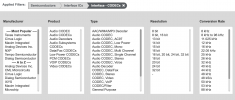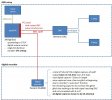Vacceo
Major Contributor
- Joined
- Mar 9, 2022
- Messages
- 3,253
- Likes
- 3,515
BTW, if you can stand the acid reflux of browsing Darko´s page (I hate to increase his traffic), there is a letter from Erin next to Amir´s. I will not give Erin crap; he may be more diplomatic, he may have a chrematistic interest and so on, but he does measure and he provides data, thus setting him in a different galaxy than the Darkos of this world.
It´s very interesting to see that, once boiled down, his message tells the same story as Amir´s yet the answer is completely different. To answer what measures can and cannot tell us: they tell us if a product is well designed and executed and what it does; they cannot tell us the amount of bootlicking you want to provide to manufacturers. I understand, we all have to make a living and an apartment in Berlin is not cheap. It´s a city with a long history of looking the other way when con men speak, I guess everything ends up permiating.
It´s very interesting to see that, once boiled down, his message tells the same story as Amir´s yet the answer is completely different. To answer what measures can and cannot tell us: they tell us if a product is well designed and executed and what it does; they cannot tell us the amount of bootlicking you want to provide to manufacturers. I understand, we all have to make a living and an apartment in Berlin is not cheap. It´s a city with a long history of looking the other way when con men speak, I guess everything ends up permiating.



